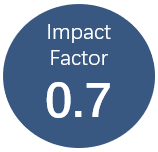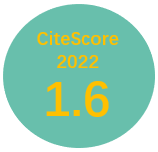Financing infrastructure in Asia through bonds and capital markets
Vol 4, Issue 1, 2020
VIEWS - 2099 (Abstract) 677 (PDF)
Abstract
The project finance scenario has changed significantly around the world after the 2008 financial crisis and following the subsequent Basel III recommendations. Project finance loans from commercial banks and financial institutions have largely dried up, leaving it mostly to the export credit agencies and the bilateral and multilateral development banks to provide the institutional credit. Unfortunately, those sources are not enough, given the huge needs for construction of new infrastructure and renovation of the old ones across Asia, Africa and Latin America. The need for capital markets, through market listed financial products across asset class, unlocking a large part of domestic and corporate savings, has never been felt as strongly before. This article seeks to analyze the development story of various Asian capital markets and examine financial products, which have succeeded in their short history in receiving investor interest. The article also delves into the challenges to market development, policy imperatives and the issues relating to market liquidity and credit rating, which are the most significant influencers for public market float and investor interest.
Keywords
Full Text:
PDFReferences
Asia Securities Industry & Financial Markets Association (ASIFMA) (2016). Asian Infrastructure Project Bonds: Attracting Foreign Investors. http://www.asifma.org/uploadedFiles/ASIFMA%20Infrastructure%20Project%20Bonds%20Factsheet%20Final%20version.pdf.
Association for Financial Markets in Europe (AFME) and International Capital Market Association (2015). Guide to Infrastructure Financing: Bank loans, debt private placements and public bonds—Smoothing the pathway for effective funding.
Bank for International Settlements (2017). High-Level Summary of Basel II Reforms. https://www.bis.org/bcbs/publ/d424_hlsummary.pdf.
Canuto O and Liu L (2010). “Subnational debt finance: Make it sustainable”. In: Canuto O and Giugale M (Eds.), The Day After Tomorrow—A Handbook on the Future of Economic Policy in the Developing World. Washington, DC: World Bank. 219–237.
Annual Report - Crédit Agricole CIB
Credit Suisse Asset Management (2010). Can Infrastructure Investing Enhance Portfolio Efficiency? https://www.credit-suisse.com/pwp/am/downloads/marketing/infrastructure_ch_uk_lux_ita_scandinavia.pdf.
Goswami M and Sharma S (2011). “The development of local debt markets in Asia”. IMF Working Paper WP/11/132. Washington, DC: International Monetary Fund. https://doi.org/10.5089/9781455259373.001.
Inframation (2017, 5 October). Case Study: Indonesian Power Project in Landmark Bond Issue. https://www.inframationgroup.com/case-study-indonesian-power-project-landmark-bond-issue
Invesco (2016). Primer on Municipal Bonds: What Investors Need to Know. https://www.invesco.com/static/us/investors/contentdetail?contentId=96ca582c5ed1d510VgnVCM100000c2f1bf0aRCRD&dnsName=us.
Levinger H and Li C (2014). “What’s behind recent trends in Asian corporate bond markets?” Current Issues: Emerging Markets. Frankfurt, Germany: Deutsche Bank Research.
Narayanaswamy M, Blitzer C and Carvajal A (2017). “The importance of local capital markets for financing development”. EMCompass No. 28. Washington, DC: International Finance Corporation.
Park C-Y (2016). “Developing local currency bond markets in Asia”. ADB Economics Working Paper Series No. 405. Mandaluyong, the Philippines: Asian Development Bank.
Rowley A (2018, 15 June). “Beware the next Asian debt crisis”. Nikkei Asian Review.
Sheppard R (2003). “Capital markets financing for developing-country infrastructure projects”. DESA Discussion Paper No. 28, United Nations ST/ESA/2003/DP/28. New York, NY: United Nations.
Standard and Poor’s (2018). Ratings Direct.
Thomas F (2016). Innovation in Climate Finance and Project Bonds in Asia Making a Comeback. Manila: the Philippines: Asian Development Bank.
United Nations, Economic and Social Commission for Asia and the Pacific (2019). Infrastructure financing for sustainable development in Asia and the Pacific. Sales No. E.19.II.F.11. Bangkok
United Nations Economic and Social Commission for Asia and the Pacific (UN ESCAP) (2012). “A new vision for Public-Private Partnerships (PPP) in Asia-Pacific”. Speech by Noeleen Heyzer at Ministerial Conference on Public-Private Partnerships for Infrastructure Development, Third Session, Tehran, Iran, 14 Nov. New York, NY: UN ESCAP.
_____ (2019). Economic and Social Survey of Asia and the Pacific 2019: Ambitions Beyond Growth. New York, NY: UN ESCAP. https://www.unescap.org/publications/economic-and-social-survey-asia-and-pacific-2019-ambitions-beyond-growth.
Verougstraete M (2017). Tapping Capital Markets & Institutional Investors for Infrastructure Development. Bangkok, Thailand: UN ESCAP.
World Bank Group (2015a). 2015 South Asia PPI Data Update. Washington, DC: World Bank.
_____ (2015b). 2015 East Asia and Pacific PPI Data Update. Washington, DC: World Bank.
_____ (2017). Argentina: Capital Market Financing for Infrastructure. Washington, DC: World Bank.
_____ (2018a). World Development Indicators. Washington, DC: World Bank.
DOI: https://doi.org/10.24294/jipd.v4i1.1168
Refbacks
- There are currently no refbacks.
Copyright (c) 2020 Shubhomoy Ray, Jyoti Bisbey

This work is licensed under a Creative Commons Attribution-NonCommercial 4.0 International License.

This site is licensed under a Creative Commons Attribution 4.0 International License.










